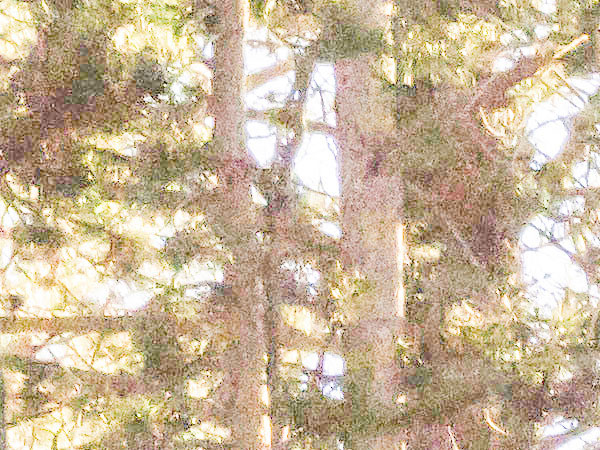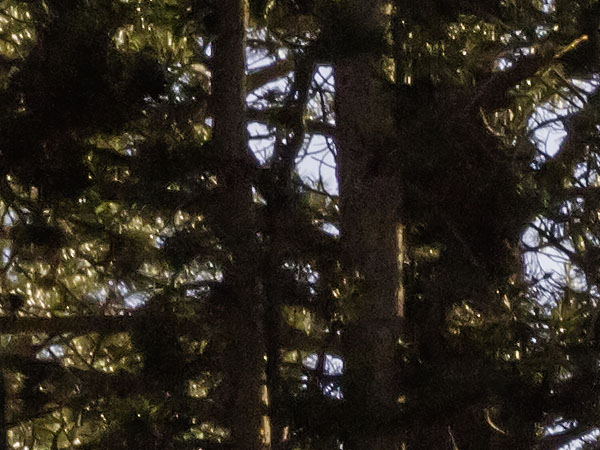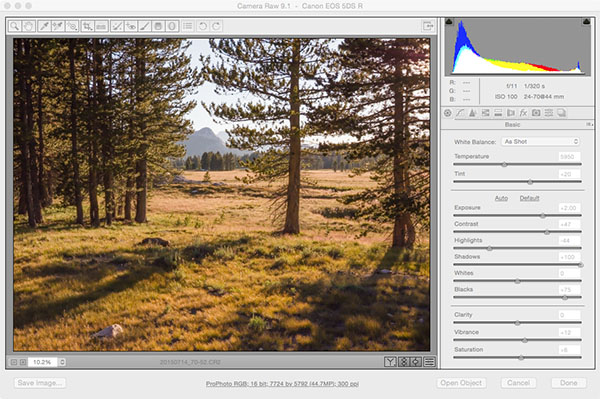Let’s say you are looking for a new camera. You want to make a smart decision, especially since you are sinking your hard-earned money into the purchase. You sure don’t want to make a mistake and end up with deficient gear. So you do the smart thing — you do some research. You look around on the web, find some articles, and you discover that there is a lot of contradictory information. Some tell you that Product X is wonderful, while others are adamant that Product X is pathetic and that Product Y is far superior. The Product X fans point out that Product Y is deficient in other critical ways by comparison to Product X.
You have some unanswered questions.
I keep hearing that Camera X has terrible noise compared to Camera Y. In fact, I found some photographs that demonstrate how bad this noise is. Why in the world would anyone get Camera X?!
Both sides provide “evidence.” Photographers love evidence, especially evidence of a failure to achieve divine technological perfection, and double-especially when the failure is demonstrated in a brand they don’t own. They get a little testy though, when the “evidence” makes their product look weak! (For a fun detour, look up the term confirmation bias on the web. Also, this is an important time for a reminder that photography is about photographs, not about cameras.)
I want to construct a little story for you based on “evidence.” We’ll start with evidence that makes a particular product (one that I rely on) look particularly bad. But before we start, you need to promise to read the whole thing. I’ll try to make it worthwhile.
OK, I promise to read it all, and with an open mind.
Good. Here we go.
Lots of people are concerned with the related issues of dynamic range (the camera’s ability to record image data from both light and dark sources in a single photograph) and noise (non-image artifacts that are, in a rough sense, sort of like “grain” on film).
I’ll begin with an example of noise in a photograph I made using the the new and very expensive Canon EOS 5Ds R, a 50.6MP full frame DSLR that Canon released recently.

Man, that is awful! That 5Ds R obviously produces terrible noise. It is so bad that the photograph is unusable, at least for anything other than an article demonstrating how bad it is! And the color is pathetically bad, too!
Yes. That image looks absolutely horrible!
Astute, critical thinkers are already wondering what went wrong here. Let me explain.
This is a “100% magnification crop” from a much bigger photograph. (In a 100% crop, each pixel of the original image uses one pixel on a display, more or less. It can be a bit more complicated than that, but I’ll spare you the other details.) Depending on your screen resolution, you are looking at what is roughly equivalent to an area a couple of inches wide cropped out of a print that would be over ten feet wide.
Well, yes, but that noise is still pretty awful.
Yes, it is in this example. Let me tell you more. To produce that awful quality, the crop (example #1) was modified in post production using the Adobe Camera Raw (ACR) software that comes with Photoshop. The starting point for the example you see above was actually the following version (example #2) of the same crop, in jpg format.

Yes, this is the same image as the previous one, but before some very extensive modifications needed to produce that example of awfulness (example #1) shown earlier. For the Photoshop and Lightroom users among you, the modifications included:
- Exposure set to +4.00
- Black set to +100
- Shadows set to +100
Oh, so you only “see” that noise if you radically alter the original image in post and look at it at 100% magnification?
Yes, that is more or less the case. The area in the first example (ex. #1) that looks so awful is an area in the photograph that should actually look very dark — it is an area of deeply shaded, backlit forest trees and it should be black or nearly so. If you look closely at the second example (ex. #2) above you may be able to see a bit of noise, but that is normal and it would not be visible at all even in a very big print.
Here is a screen image (example #3) of the image from which example #2 was taken — the screenshot shows the entire photograph, along with some settings in ACR. The area of the prior 100% crop comes from a dark section of the trees at the upper left.

But wait, I’m still not satisfied. First, I can still see some noise if I look very closely at that second 100% crop. And even though that screen shot is small, I can see a bunch adjustments to it on the right side! What’s going on here?
You have good eyes and you are very attentive. There is hope for you! ;-)
The first crop (grossly awful and pitifully noisy example #1) at the beginning of this article was created by taking a crop from the screenshot you see above (#2 — the dark one that looks fine in regards to noise) and pushing it radically. But what about the starting point file from which that second crop (ex. #2) was taken?
Example #2 had already been pushed radically before the push described above. In other words, before the alteration that produced the awful noise I’m example #1, the “nice looking” example #2 had already been altered almost as radically. Yes, it was processed twice. That first “push” was prior to and in addition to the gross changes listed above in the first example. The additional alterations necessary to get the decent-looking image in the above screenshot included:
- Exposure was pushed to +2.00
- Contrast was increased to +47
- Highlights was reduced to -44 to compensate for the other increases and avoid blown highlights
- Shadows was raised all the way to +100
- Blacks was raised to +75
- Small adjustments were made to increase Vibrance to +12 and Saturation to +6.
- Noise reduction was increased: Luminosity to 50 and Chroma to 25
OK, now you are playing games with me! What did the real original exposure look like, before any post-processing adjustments?
In fact, the actual starting image looked like the following example #4 — here is another screen shot showing the straight-out-of camera (SOOC) unaltered RAW image inside the ACR application:

Wait! Where is that really bright and noisy section with all the gross noise that I saw in example #1?
It comes from the almost completely black section of trees at the far upper left in this screenshot. Yes, this is the original image as exposed, and it was very dark.
Why the heck did you expose it so dark?
That’s kind of a long story, and it involves a “safety shot” and an extremely wide dynamic range in the scene, but if you are interested, go here. Basically, there was a very bright area of almost direct sun at the upper right, and this particular image was an underexposed “safety shot” in case I needed more detail from the highlight areas. In the end I did not need it, but it was the worst underexposed version I could find of this scene in my archives.
But, still, I can see all that noise in the first example. Isn’t that a bad thing? And can’t some other camera produce better results in such a test image?
Well… I suppose that a test image like this can tell those who are mainly interested in certain technical issues some interesting things about the nature of noise in digital photographs — its size, its shape, its texture, what it could do in a worst case situation, and so forth. But the fact is that all digital cameras produce photographs that contain noise. The question is not, is there noise? There is. Always.
The real question is, what effect does the noise have on my photographs? A supposed objective test image like the one I started with is generally not the best indicator of your camera’s ability to produce quality images. In fact, the odds are that you will never do anything remotely like what was necessary to make that first image look that bad. Even though there are differences in the noise characteristics of various cameras, the fact is that cameras today handle noise very, very well.
Unless your goal is to make exposures like this…

And turn them into photographs like this…

Yes, that is what your photograph would actually look like if you processed it to show the noise shown in the first crop at the start of this article. Nice, eh?
Yuck!
Yes. And next time you see a 100% crop purporting to demonstrate the noise characteristics of some camera, you might ask to see the starting point image file and a full final photograph demonstrating the gross processing that was necessary to produce the noise.
Can you show me a real-world example instead of this rigged one?
Yes. I could show you many, but I wrote an article with examples here: Post Processing: A Shadow Recovery Example. I think you’ll find it interesting!
This article is part of my Photographic Myths and Platitudes series.
- Photographic Myths and Platitudes — Diffraction Limited Aperture
- Photographic Myths and Platitudes — ‘Landscape Photography Lenses’ (Part I)
- Photographic Myths and Platitudes — ‘Landscape Photography Lenses’ (Part II)
- Photographic Myths and Platitudes — ‘Photographer’ versus “Photoshopper’
- Photographic Myths and Platitudes — Primes Make You a Better Photographer
- Photographic Myths and Platitudes — New DSLR? Why You Do NOT Need a 50mm Prime
- Photographic Myths and Platitudes — No Post-Processing!
- Photographic Myths and Platitudes — That Noise is Awful!
- Photographic Myths and Platitudes — The Very Best Camera! (Part 1)
 G Dan Mitchell is a California photographer and visual opportunist. His book, “California’s Fall Color: A Photographer’s Guide to Autumn in the Sierra” is available from Heyday Books and Amazon.
G Dan Mitchell is a California photographer and visual opportunist. His book, “California’s Fall Color: A Photographer’s Guide to Autumn in the Sierra” is available from Heyday Books and Amazon.
Blog | About | Flickr | Twitter | Facebook | Google+ | 500px.com | LinkedIn | Email
All media © Copyright G Dan Mitchell and others as indicated. Any use requires advance permission from G Dan Mitchell.
Discover more from G Dan Mitchell Photography
Subscribe to get the latest posts sent to your email.

I am sure the A7RII is a great camera. I am about to upgrade and could buy it instead of the 5DSr. But as of now, my basis for a decision will be the ease of use of either body and whether I could be happy with an EVF and messing with adapters or Sony lenses instead of just going forward with the 5DSr and my 3 Canon lenses I like so well. I am trying to give the Sony a fair shake before I go with the Canon, but it is hard to sift through all the evangelism and hand-wringing to find actual usful comparitive information by which to base a choice on. So I greatly appreciate your articles on the 5DSr, and I am enjoying your rational voice amongst the rising din of DR insanity as the Sony A7RII gets out to users.
Thanks. That “din of DR insanity” seems to be the obsession of the day. It will pass. Something else will replace it. ;-)
By the way and all kidding aside, noise is a concern for photographers, especially when it comes to making exposure decisions. It is far less of a real issue when it comes to selecting among comparable cameras, and the extend to which it matters in the latter situation depends on how you’ll use the camera. And be careful to avoid obsessing about one camera issue (such as noise) at the expense of consideration of other important factors — AF ability, price, size/weight, available lenses, and much more.
Regarding how to minimize actual problematic noise in photographs:
1. In general (which exceptions I’ll ignore of now) avoid underexposing your photographs. In fact, sometimes it is better to over-expose as long as you don’t blow out highlights. A “bright” exposure, all else being equal, is less likely to show noise.
2. Avoid shooting at ISOs that are higher than necessary since high ISO can lead to, among other things, increased noise.
3. When sharpening photographs in post, take steps to avoid applying unnecessary sharpening to large areas of smooth texture and consistent color and to smooth gradients. To the extent possible, try to focus your sharpening on areas that benefit from it.
4. Don’t be afraid to apply noise reduction in post-processing. Modern noise reduction algorithms can effectively reduce noise with minimal negative effects on sharpness.
5. Don’t obsess on the noise you can see at 100% magnification. No one else is going to see your photographs that way. Concern yourself with the effects of noise on your likely reproduction medium and size.
6. Be aware that some noise can actually be a good thing. In fact, there are situations in which photographers may add noise to an image for creative and other reasons!
Hmmm… Sounds like another potential article!
Dan
Excellent article, Dan. You hit the nail on the head with this one!